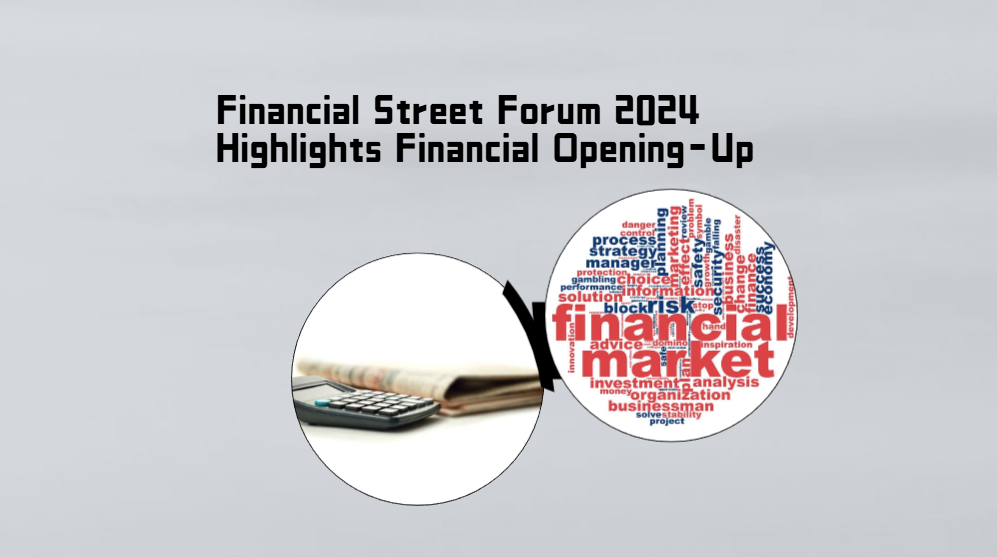Boosting Commercial Banks' Participation in Treasury Futures to Strengthen China's Bond Market
Boosting Commercial Banks’ Participation in Treasury Futures to Strengthen China’s Bond Market
China has taken another step towards developing a multi-tiered bond market with a new initiative aimed at encouraging commercial banks to engage in treasury futures trading. This policy, announced as part of a broader regulatory framework in the Opinion on Strengthening Regulation to Promote High-Quality Development of the Futures Market (referred to as "the Opinion"), sets the stage for a more diversified bond market by enabling commercial banks to hedge interest rate risks effectively.
Commercial banks are among the most significant holders in China's bond market. Back in 2020, the China Securities Regulatory Commission (CSRC), along with the Ministry of Finance, the People's Bank of China (PBOC), and the former China Banking and Insurance Regulatory Commission (CBIRC), jointly issued a statement permitting qualified banks to participate in treasury futures. Currently, six commercial banks have been approved for this pilot, with some already demonstrating effective use of treasury futures to manage interest rate risks related to bond underwriting, market-making, and proprietary trading.
Managing Interest Rate Risk with Treasury Futures
In an increasingly volatile bond market, commercial banks are finding treasury futures to be a highly efficient, low-cost tool for managing interest rate risk. As these banks' asset and liability sides are particularly sensitive to interest rate fluctuations, utilizing treasury futures can help smooth out the impact of such volatility on earnings, thereby improving their ability to withstand market shocks.
Treasury futures also offer banks a way to stabilize asset values amid rapid market adjustments. The liquidity and quick execution offered by treasury futures make them an effective hedge against fluctuations in the spot bond market. Moreover, banks can adjust the duration of their asset portfolios with precision, optimizing asset-liability management at a reduced liquidity cost.
In addition to risk management, treasury futures play a critical role in refining China's bond yield curve, which serves as the risk-free benchmark for the broader financial market and the macroeconomy. With commercial banks holding roughly 70% of the interbank bond market, their participation in treasury futures will help establish more continuous and fair pricing, solidifying the role of the yield curve.
The benefits extend beyond domestic markets. As foreign institutional investors have increasingly participated in China's bond market, holding over 4 trillion yuan in bonds through channels like QFII, RQFII, and Bond Connect, the involvement of commercial banks in treasury futures can foster a more robust and resilient bond market infrastructure. This, in turn, enhances China's market attractiveness to international investors by creating a deeper, more dynamic futures and spot market.
Optimizing Market Functionality
Since 2013, the China Financial Futures Exchange (CFFEX) has introduced a range of treasury futures products, including 2-year, 5-year, 10-year, and 30-year contracts. These products now cover short, medium, and long maturities, offering a relatively comprehensive suite of risk management tools. The market has grown steadily, with daily trading and open interest increasing year by year. As of the first nine months of 2024, average daily trading volume reached 216,600 contracts, a 20.54% increase over the previous year, while average daily open interest climbed 24.21%.
Moreover, market participation has become more institutionalized and professional. Commercial banks and insurance companies have been gradually increasing their engagement, while pension funds and securities companies have also enhanced their involvement. The presence of these institutional players contributes to greater market stability and sophistication.
CFFEX has also driven forward continuous innovation in treasury futures trading mechanisms, introducing several key initiatives. These include a one-sided margin system for cross-product positions, the use of treasury bonds as collateral, and a delivery versus payment (DVP) settlement system. These advancements have further boosted market liquidity and operational efficiency.
Supporting the Financial Market and Real Economy
Treasury futures have become a vital tool in facilitating government bond issuance, enhancing market liquidity, and assisting the broader economy. Bond underwriters use treasury futures for hedging purposes, managing interest rate risk during the issuance of government and municipal bonds. For instance, CFFEX swiftly included special government bonds, such as pandemic-related treasury bonds, into the treasury futures deliverable basket, aiding their smooth issuance.
In terms of market liquidity, treasury futures have significantly activated existing bond holdings. For example, trading volume in deliverable bonds surged by 47% following the launch of the 10-year treasury futures and by 66% for the 30-year treasury futures.
Additionally, treasury futures are helping institutional investors better manage credit risk, thereby facilitating corporate bond issuance and supporting the real economy. Off-market interest rate options linked to treasury futures offer a way for corporations to lock in financing costs, transferring risks from enterprises to the broader financial market.
Finally, treasury futures enable long-term investors like pension funds and insurance companies to hedge against interest rate risk. During market downturns, these institutions can use futures to smooth their portfolio values, reducing the need for sell-offs that could destabilize markets. Treasury futures also help address the mismatch between cash inflows and asset allocation, particularly during periods of low bond supply and high demand for safe assets.
Enhancing Product Innovation
The application of treasury futures in financial product innovation has also taken off. Financial institutions have utilized treasury futures to develop more refined services, such as bond baskets and ETFs. The launch of the 30-year treasury futures contract, for instance, has spurred the creation of corresponding ETFs, providing institutional investors with more efficient tools for portfolio management.
With these developments, treasury futures are proving to be a cornerstone in China's financial markets, enhancing both the stability of financial institutions and the broader economy. As more commercial banks participate, the market is set to become even more liquid, resilient, and competitive on a global scale.






















































First, please LoginComment After ~